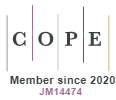Value Management Office (VMO) as a pillar of organizational value management
DOI:
https://doi.org/10.5585/2025.28191Keywords:
PMO, VMO, project management office, value management office, project management, benefits management, stakeholdersAbstract
This editorial explores the VMO (Value Management Office) as a structure or entity of the organization oriented to the delivery value from projects. Initially, it is necessary to understand what value means for the various stakeholders involved in the projects. This editorial also highlights that there are research opportunities related to understanding the antecedents and consequences of VMO, as well as studies that seek to understand its constituent elements. The frameworks, tools, and practices are also promising research objects, as understanding them helps overcome the challenges related to VMO implementation. It is worth noting that the delivery of value is directly related to the perception of tangible and intangible benefits of projects for the various stakeholders. Accordingly, the integration of stakeholders in projects, from planning, using the “EN 12973:2020 - Value Management Standard” can facilitate the incorporation of value management concepts and practices, as well as frameworks such as BRM (Benefits Realization Management), MoV (Management of Value), Value Stream Mapping (VSM) and PMO-MI® (Project Management Office Maturity Index), which can assist in the implementation of a VMO. Finally, several theoretical lenses and analytical perspectives can be used to understand the phenomenon of value construction from the implementation of VMO in organizations.
References
AIPMO. (n.d.). PMO-MI: Project Management Office Maturity Index. Recuperado de https://pmo-mi.com/
Aubry, M., Hobbs, B., & Thuillier, D. (2007). A new framework for understanding organisational project management through the PMO. International Journal of Project Management, 25(4), 328–336. https://doi.org/10.1016/j.ijproman.2007.01.004
Aubry, M., Müller, R., & Hobbs, B. (2010). Project management offices in transition. International Journal of Project Management, 28(8), 766–778. https://doi.org/10.1016/j.ijproman.2010.05.006
Bezuidenhout, A., Steyn, H., & Pretorius, S. (2024). The relationship between PMO support functions and project management maturity levels. South African Journal of Industrial Engineering, 35(2), 124–139. https://doi.org/10.7166/35-2-2929
Bizarrias, F. S., Penha, R., & da Silva, L. F. (2021). Valor e projetos: a contribuição da perspectiva de marketing. Revista de Gestão e Projetos, 12(2), 1-8. https://doi.org/10.5585/gep.v12i2.20121
Bradley, G. (2016). Benefit Realization Management: A Practical Guide to Achieving Benefits Through Change. Routledge.
CEN. (2020). 12973:2020 - Value Management. (European Standard No. 12973:2020). Comité Européen de Normalisation.
Ciric Lalic, D., Lalic, B., Delić, M., Gracanin, D., & Stefanovic, D. (2022). How project management approach impact project success? From traditional to agile. International Journal of Managing Projects in Business, 15(3), 494-521. https://doi.org/10.1108/IJMPB-04-2021-0108
Gomes, R. J. L., Silva, L. F., Costa, P. R., & Oliveira, P. S. G. (2024). Digital technologies and knowledge management in project context: a systematic literature review. Knowledge Management Research & Practice, 1-16. https://doi.org/10.1080/14778238.2024.2419894
Hill, G. M. (2008). The Complete Project Management Office Handbook. CRC Press.
Hobbs, B., Aubry, M., & Thuillier, D. (2008). The project management office as an organisational innovation. International Journal of Project Management, 26(5), 547–555. https://doi.org/10.1016/j.ijproman.2008.05.008
Ichsan, M., Sadeli, J., Jerahmeel, G., & Yesica, Y. (2023). The role of project management office (PMO) manager: A qualitative case study in Indonesia. Cogent Business & Management, 10(2), 2210359. https://doi.org/10.1080/23311975.2023.2210359
Ika, L. A., & Pinto, J. K. (2022). The “re-meaning” of project success: Updating and recalibrating for a modern project management. International Journal of Project Management, 40(7), 835-848. https://doi.org/10.1016/j.ijproman.2022.08.001
Kaplan, R. S., & Norton, D. P. (2006). Alignment: Using the balanced scorecard to create corporate synergies. Harvard Business Press.
Ko, J. H., & Kim, D. (2019). The effects of maturity of project portfolio management and business alignment on PMO efficiency. Sustainability, 11(1), 238. https://doi.org/10.3390/su11010238
Monteiro, A., Santos, V., & Varajão, J. (2016). Project management office models–a review. Procedía Computer Science, 100, 1085-1094. https://doi.org/10.1016/j.procs.2016.09.254
OGC. (2010). Management of Value (MoV). The Stationery Office.
Otra-Aho, V. J., Iden, J., & Hallikas, J. (2019). The impact of the project management office roles to organizational value contribution. International Journal of Information Technology Project Management, 10(4), 79–95. https://doi.org/10.4018/IJITPM.2019100103
Rode, A. L. G., Svejvig, P., & Martinsuo, M. (2022). Developing a multidimensional conception of project evaluation to improve projects. Project Management Journal, 53(4), 416-432. https://doi.org/10.1177/87569728221095473
Rother, M., & Shook, J. (1999). Learning to See: Value Stream Mapping to Create Value and Eliminate Muda. Lean Enterprise Institute.
Zhou, C. (2024). Green innovation: a key strategy for enterprises and countries to gain a competitive edge in the global market. Technology Analysis & Strategic Management, 1-16. https://doi.org/10.1080/09537325.2024.2346796
Downloads
Published
How to Cite
Issue
Section
License
Copyright (c) 2025 Luciano Ferreira da Silva, Nelson José Rosamilha

This work is licensed under a Creative Commons Attribution-NonCommercial-ShareAlike 4.0 International License.
- Abstract 389
- pdf 64
- pfd (Português (Brasil)) 136






